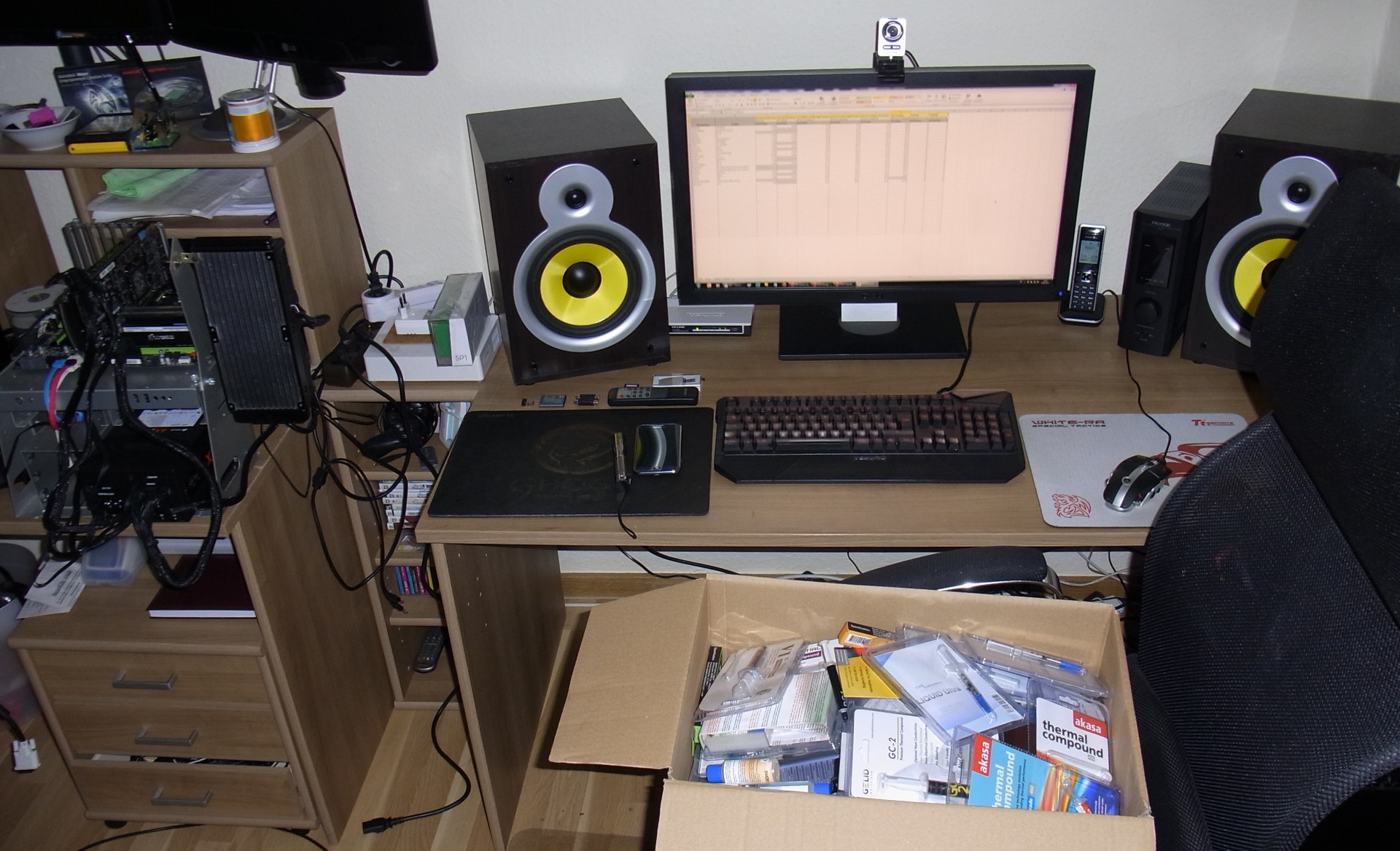Thermal Paste Comparison, Part One: Applying Grease And More
If you find yourself fighting a stubbornly-low overclock, there's a chance that your thermal solution isn't working as effectively as it should. We're testing a number of thermal pastes that might help. But first, let's go over the basics of CPU cooling.
Get Ready For The Thermal Compound Benchmarks!
Tom's Hardware's Thermal Compound Charts and a Part Two Preview
Based on those four setups, I tabulated the test results of 20 pastes and published them to our Thermal Compound Charts. These benchmarks help determine how much experience a given product requires, which application is best suited to each compound, and whether they're appropriate for use with graphics cards.
The second part will also discuss liquid metal offerings and various thermal pads, both of which are special cases. Finally, all tested products are introduced and pictured. In other words, there are not only charts and tables, but also a brief verbal assessment of each and every tested product. Yes, you'll even get a few purchase recommendations.
Does "really expensive" always translate to "really good"? Part two of our exploration will answer that question.
Current page: Get Ready For The Thermal Compound Benchmarks!
Prev Page Why Do We Test Each Paste In Four Scenarios?Get Tom's Hardware's best news and in-depth reviews, straight to your inbox.

Igor Wallossek wrote a wide variety of hardware articles for Tom's Hardware, with a strong focus on technical analysis and in-depth reviews. His contributions have spanned a broad spectrum of PC components, including GPUs, CPUs, workstations, and PC builds. His insightful articles provide readers with detailed knowledge to make informed decisions in the ever-evolving tech landscape
-
alidan please tell me yo are also going to do the solder the heatsink to the cpu method? i forget what its called, but that is what i want to use for my next computer and would love to see how it stacks up.Reply -
The Von Matrices In the second section about advanced cooling methods, are you planning on discussing delidding CPUs and replacing thermal paste? If you do it might be worth mentioning that the delidding won't improve temperatures because of improved thermal paste conductivity but because of reducing the thickness of the paste. See http://forums.anandtech.com/showpost.php?p=34053183&postcount=566Reply -
stickmansam Huh, I do turn my heatsinks sometimes for optimal alignment so the heat pipes are perpendicular to the die. Depends if I got the room in the case and what ram is being used. Also heatsink dependentReply -
slatts1024 One of the best articles I've read on Tom's in years and that's saying something. Looking forward to part 2.Reply -
Shankovich Loving that DHT-based design overlay picture on the first page. I've been telling my friends for a while to just get coolers with plated covers because the pipes miss the hotspot on intel CPU's, but no I'm full of bs apparently. This video is awesome btw, shows how spreads happen http://www.youtube.com/watch?v=EyXLu1Ms-q4Reply -
nukemaster How many volts does this "7 volt" unregulated power supply put out?Reply
Just curious. I have some 8/9/12 volt regulators that would eliminate the guessing games for resistor fan adapters(voltage depends on the fans current draw).
I have seen unregulated 6 volt power supplies range from 8-over 12 volts at low loads.
For a rather low price you can use a regulator to get whatever voltage you want :)
ohh yeah and...
I can't wait for the next part of this to be release -
jimmysmitty From what I have seen it depends on the materials. AS5 was great for a while but thee are better ones out than that now such as Noctuas or Zalmans.Reply
I also enjoyed using the IC Diamond thermal paste as it proved to cool very well but since it has a diamond based substance it can scuff the heat spreader.

